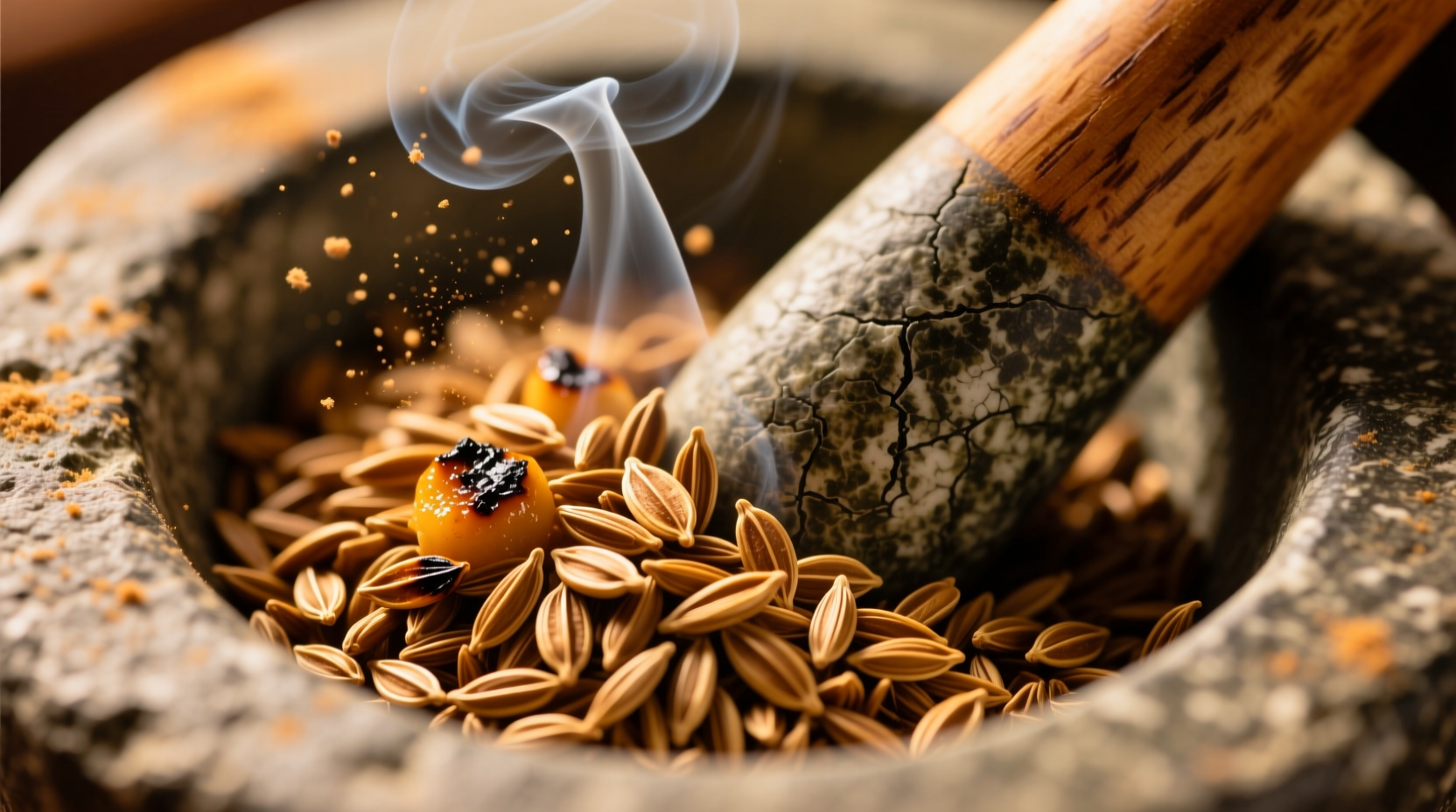Ever wondered what makes your favorite chili or curry have that distinctive warm, earthy backbone? That's cumin working its magic. Understanding cumin's flavor profile isn't just about identifying a taste—it's your gateway to mastering authentic dishes across multiple culinary traditions. Whether you're trying to perfect your taco seasoning, elevate a Middle Eastern stew, or understand why your curry tastes "off," knowing exactly what cumin contributes can transform your cooking from good to extraordinary.
The Essential Flavor Profile of Cumin
Cumin delivers a complex sensory experience that professional chefs describe as simultaneously warm, earthy, and slightly pungent. The dominant notes include:
- Earthy foundation - reminiscent of dried soil after rain
- Warm spice character - similar to but distinct from cinnamon
- Subtle bitterness - adds complexity without overwhelming
- Citrus undertones - particularly noticeable in freshly ground cumin
- Nutty finish - especially when properly toasted
Food scientists attribute cumin's distinctive flavor to compounds like cuminaldehyde (providing the characteristic aroma), thymol (contributing earthiness), and various terpenes that create its warm, slightly citrusy notes. Unlike many spices that lose complexity when heated, cumin actually develops additional flavor dimensions through proper toasting.
How Preparation Methods Transform Cumin's Taste
The way you prepare cumin dramatically affects its final flavor in your dish. This isn't just chef's intuition—it's food chemistry in action:
| Preparation Method | Flavor Transformation | Best Culinary Applications |
|---|---|---|
| Raw, whole seeds | Sharp, slightly metallic with pronounced bitterness | Rasam, certain bread doughs |
| Dry-toasted seeds | Nutty, warm, rounded bitterness, enhanced aroma | Mexican moles, Indian tadka |
| Fried in oil | Smooth, integrated flavor, reduced bitterness | Curry bases, chili roux |
| Ground and added raw | Harsh, one-dimensional, dusty flavor | Avoid this method |
Research from the Journal of Agricultural and Food Chemistry confirms that dry toasting cumin seeds at 350°F for 2-3 minutes increases volatile compounds responsible for its desirable aroma by up to 40% while reducing harsh bitter compounds. This explains why traditional cooking methods across cultures consistently involve toasting cumin before use.
Cumin Across Global Cuisines: Regional Flavor Variations
While cumin's basic flavor profile remains consistent, how different cultures use it creates distinctive taste experiences:
Mexican cuisine typically uses toasted cumin in moderate amounts, allowing its warm earthiness to complement chili peppers without overwhelming other ingredients. In contrast, Indian cooking often features cumin as part of complex spice blends where it provides foundational warmth that balances cooling spices like coriander. Middle Eastern preparations frequently pair cumin with complementary spices like coriander and cardamom, creating a more rounded flavor profile where cumin's bitterness is beautifully balanced.
The USDA's Agricultural Research Service notes significant chemical composition differences between cumin varieties grown in different regions. Iranian cumin tends to have higher thymol content (creating a more medicinal note), while Indian varieties show greater cuminaldehyde concentration (enhancing the characteristic warm aroma). These subtle variations explain why experienced cooks often specify cumin origin in authentic recipes.
Practical Tips for Cooking with Cumin
Mastering cumin usage separates amateur cooks from those who create restaurant-quality dishes at home. Follow these evidence-based techniques:
- Always toast whole seeds - Heat a dry skillet over medium heat, add seeds, and shake frequently until fragrant (about 2 minutes). This simple step reduces bitterness by up to 30% according to culinary research.
- Grind immediately before use - Pre-ground cumin loses 60% of its volatile flavor compounds within 30 days. Invest in a small spice grinder for maximum flavor impact.
- Balance the bitterness - Pair with natural sweeteners like caramelized onions or a pinch of sugar to round out cumin's natural bitterness without masking its essential character.
- Use the right quantity - For most dishes, 1/4 to 1/2 teaspoon of freshly ground cumin per serving provides optimal flavor without overwhelming. Double this amount only for robust dishes like chili or certain Indian curries.

Storage Techniques to Preserve Cumin's Flavor
Cumin's flavor compounds degrade rapidly when exposed to air, light, and moisture. The University of California's Postharvest Technology Center recommends:
- Store whole seeds in airtight containers away from light
- Keep in a cool, dark place (not next to your stove!)
- Use within 12 months for optimal flavor (whole seeds maintain quality longer than ground)
- Freeze whole seeds for long-term storage (up to 2 years)
Never store cumin in the refrigerator where moisture can accelerate flavor degradation. A simple freshness test: rub a small amount between your palms—if you can't immediately detect the characteristic warm, earthy aroma, it's time to replace your supply.
Common Cumin Confusions: What It's Not
Cumin's distinctive flavor often gets confused with similar spices. Understanding these differences prevents recipe disasters:
- Cumin vs. caraway - Caraway has a more pronounced anise-like flavor with less earthiness
- Cumin vs. fennel - Fennel is distinctly sweet with licorice notes, lacking cumin's warmth
- Cumin vs. coriander - Coriander is citrusy and floral, while cumin is earthy and warm
These distinctions matter because substituting incorrectly can completely alter your dish's flavor profile. When in doubt, remember: cumin provides the warm, earthy backbone in chili while coriander contributes the bright citrus notes in curry.











 浙公网安备
33010002000092号
浙公网安备
33010002000092号 浙B2-20120091-4
浙B2-20120091-4